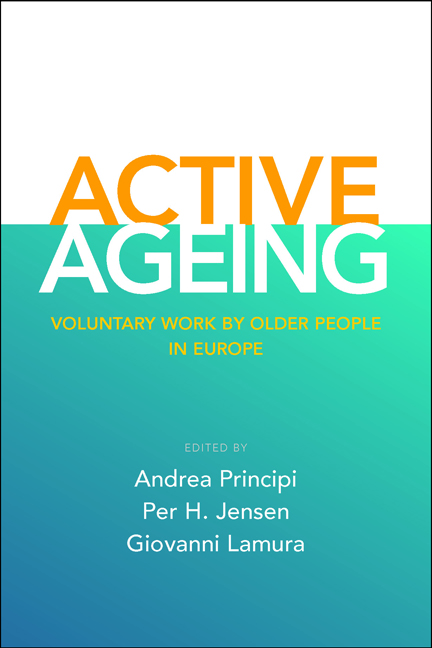Book contents
- Frontmatter
- Contents
- List of tables and figures
- Notes on the contributors
- Acknowledgements
- Foreword
- Part I Realising volunteering by older people in Europe An overarching approach
- Part II Opportunities and restrictions for older volunteers National experiences
- Part III Opportunities and restrictions for older volunteers Case studies in European voluntary organisations
- Part IV Conclusions
- Index
nine - Older volunteers in Sweden: a welfare state in transition
Published online by Cambridge University Press: 05 March 2022
- Frontmatter
- Contents
- List of tables and figures
- Notes on the contributors
- Acknowledgements
- Foreword
- Part I Realising volunteering by older people in Europe An overarching approach
- Part II Opportunities and restrictions for older volunteers National experiences
- Part III Opportunities and restrictions for older volunteers Case studies in European voluntary organisations
- Part IV Conclusions
- Index
Summary
Introduction
Non-profit volunteer organisations are well integrated into Swedish society, and play an important role in many different sectors. The voluntary sector was estimated to comprise around 50,000 organisations in 2009, with six million adult Swedes members in at least one voluntary organisation – this corresponds to around 80 per cent of the adult population. The organisations engaged 110,000 paid employees and 934,000 unpaid volunteers (Statistics Sweden, 2011). The voluntary sector's contribution to GDP (gross domestic product) is estimated at around 5 per cent (Wijkstrom and Einarsson, 2011).
The Swedish experience shows that a large voluntary sector is compatible with a homogeneous and egalitarian society with a strong and universal welfare state. Actually, the relationship between Swedish civil society and the Swedish state has been one of close cooperation. The collaboration between the Social Democratic Party, the labour movement, housing associations and consumer organisations during the rise of the Swedish welfare state is particularly notable. The presence and strength of the non-profit and volunteer sector can be attributed to the popular movement tradition, such as the labour and Socialist movements, as well as a reflection of the distinctive features of the Swedish welfare state.
The Swedish model is based on a strong political commitment to the goals of full employment and price stability, as well as to egalitarian ideals supporting processes of individualisation. It is based on the principle that all citizens have access to the same standard and quality of services independently of the individual level of income, that the individual, and not the family, is the basic unit not only of taxation but also of social benefits and social rights, and the full integration of women into the labour market (Anxo and Niklasson, 2006). Labour market participation is high for both men and women. The economic activity rate in 2011 for those aged 15-74 was 68 per cent for women and 74 per cent for men (Statistics Sweden, 2012). The Swedish family form can thus be characterised as a dual breadwinner/external care model, epitomised as a trend towards de-familisation (Esping-Andersen, 2003).
The characteristics of the welfare state have played an important role in how the volunteer sector is structured and has developed over time.
- Type
- Chapter
- Information
- Active AgeingVoluntary Work by Older People in Europe, pp. 197 - 216Publisher: Bristol University PressPrint publication year: 2014



